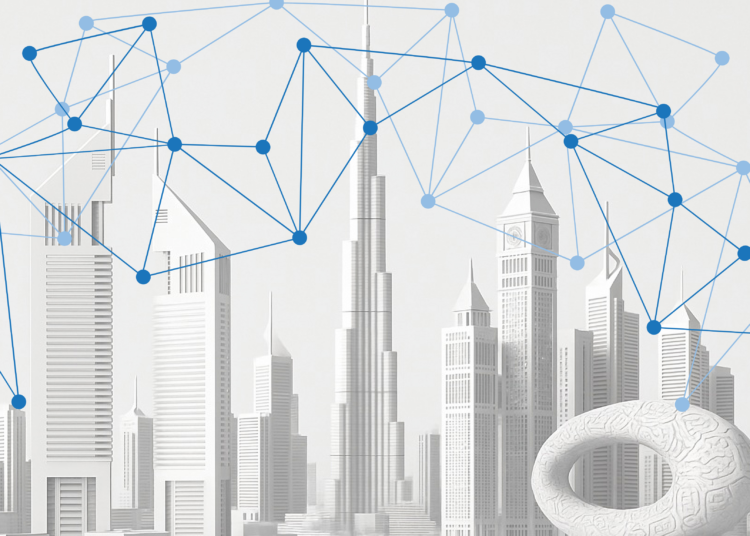As businesses generate and engage with ever-increasing volumes of data, leveraging modern infrastructure to analyse and harness information in real-time has become a cornerstone of competitive advantage.
Upgrading legacy systems to more agile, scalable, and integrated platforms, enables companies to unlock new growth opportunities, enhance decision-making processes, and respond quickly to market demands — representing a critical differentiator in today’s data-driven world.
The evolution of enterprise data management
Enterprise data management has transformed in recent years – shifting from traditional, on-premises databases designed for structured data to modern, cloud-based data platforms that can handle diverse data types at scale.
In the past, businesses relied on rigid, siloed databases that were difficult to integrate, resulting in inefficiencies and data silos. As data types, volume and velocity continue to grow exponentially, legacy systems are struggling to keep pace, leading to challenges such as limited scalability, slow analytics, and fragmented data landscapes.
Today, enterprises face a pressing need to tackle these challenges by modernising their data infrastructure to unlock seamless data integration, real-time analytics, and more agile decision-making capabilities.
Understanding data modernisation
Data modernisation involves a comprehensive overhaul of an organisation’s data infrastructure to meet the demands of the digital age. This includes migrating data from legacy systems to the cloud, as well as adopting data lakes and data meshes for storing vast amounts of structured or unstructured data, enabling real-time analytics, and integrating AI-driven tools for advanced insights.
By embracing data modernisation, enterprises can tap into significant benefits, such as enhanced decision-making through faster and more accurate data analysis and improved operational efficiency by streamlining data processes. They can also foster innovation by leveraging cutting-edge technologies.

Key components of data modernisation
Several foundational components are critical to transforming an organisation’s data capabilities:
- Cloud integration: Cloud integration is pivotal, allowing businesses to scale their data storage and processing power efficiently while reducing costs and increasing accessibility. Harnessing the cloud supports the transition from traditional data warehouses to modern architectures like data lakes and data meshes, which offer greater flexibility in managing both structured and unstructured data across distributed environments. In addition, When thinking about cloud integration, it’s important to also consider the concept of data fabric, which enables a unified, integrated data layer across hybrid and multi-cloud environments, enhancing scalability and data management.
- Advanced analytics and AI: Modern data platforms increasingly incorporate machine learning and AI to uncover deeper insights, automate processes, and enhance decision-making. These tools enable enterprises to process and analyse data at unprecedented speeds, unlocking insights that were previously inaccessible.
- Data governance and security: As data systems evolve, the importance of robust data governance and security cannot be overstated. Maintaining strict controls and ensuring data integrity are essential to protect sensitive information and comply with regulations during the modernisation journey. Effective data governance ensures that enterprises can trust the quality and accuracy of their data, which is crucial for making informed business decisions.
- Data democratisation: A key advantage of modern data platforms is the democratisation of data within organisations. By making data accessible to employees across various departments, businesses can foster innovation, empower teams to make data-driven decisions, and promote a data-centric culture, ultimately enhancing efficiency and agility.
These components collectively empower enterprises to leverage data more effectively, driving innovation and competitiveness in an increasingly data-driven landscape.
Implementing a data modernisation strategy
Modernising data infrastructure requires a strategic approach. Our experience at e& enterprise, working with companies of all shapes and sizes across the public and private sectors, has shown that a one-size-fits-all approach to data modernisation is ineffective.
However, while successful solutions must be tailored to the specific needs and circumstances of each business, every organisation’s transformation journey will be complex and unique. Still, the following principles are an elementary guide for enterprises as they start to consider their data modernisation strategy:
- Assess your needs and define clear objectives: Begin with a comprehensive assessment of the current data infrastructure in place, working with industry experts to identify areas for improvement and the most effective modernisation strategies for your business. Define clear business objectives and develop a strategic roadmap to ensure that every step of the modernisation process is aligned with the broader organisational goals.
- Select the right technologies for your business: There is a wide range of cutting-edge technologies available to choose from, including cloud-based platforms, advanced analytics, AI-driven insights and data integration tools. Identify a technology stack that offers scalability, flexibility and seamless integration with your existing systems.
- Test and adjust: Use pilot projects to test new solutions, gather feedback and make necessary adjustments before full-scale implementation.
- Monitor and optimise: Data modernisation is a continuous journey. Ongoing monitoring and data infrastructure optimisation are critical to ensuring modernisation efforts deliver the desired results and drive long-term success.
Addressing the human element is also a crucial in Implementing a data modernisation strategy. Effective change management is critical in overcoming resistance and ensuring that employees are well-equipped to work with new systems. By fostering a structured approach to change, organisations can accelerate the adoption of modern data tools and practices.
Navigating the challenges of data modernisation
While the benefits of data modernisation are clear, the journey is not without challenges. Enterprises must navigate several hurdles:
- Legacy systems integration: Integrating outdated infrastructures with modern data platforms can be complex and resource-intensive, requiring careful planning to ensure compatibility and minimal disruption.
- Data migration: Transferring large volumes of data to new platforms involves technical difficulties and risks of data loss or corruption. Precision and robust strategies are critical to a successful migration.
- Skill gaps: Modern data technologies require expertise that many existing teams may lack. Upskilling or reskilling the workforce is essential to effectively manage and utilise new tools.
- Cultural shift: Beyond technical aspects, fostering a data-driven culture within the organisation is crucial. Encouraging employees at all levels to embrace data as a central decision-making component drives better outcomes and maximises the benefits of data modernisation efforts.
Future trends in data modernisation
The data landscape continues to evolve, and new emerging trends are shaping the future of data modernisation. One such trend is the growing adoption of graph databases which are becoming increasingly popularity due to their ability to manage complex relationships between data points. These databases provide powerful capabilities for modern data environments, allowing for more efficient and sophisticated data management.
Another key trend is augmented analytics, which leverages AI to enhance data analysis. This approach makes insights more accessible to non-technical users, streamlining the decision-making process by providing actionable information with greater ease.
Additionally, data observability is gaining traction as a critical focus area, as it safeguards the reliability, quality, and performance of data pipelines. This trend enables real-time monitoring and troubleshooting, helping to prevent data-related issues and ensuring that data systems function efficiently and accurately.
Together, these trends are driving the transformation of how organisations manage and utilise their data.
Begin the journey
The imperative of data modernisation is clear: businesses that fail to adapt to the demands of the digital age risk falling behind their competitors. By transitioning to modern, scalable, and integrated data platforms, organisations can unlock new growth opportunities, enhance decision-making, and respond swiftly to market demands.
However, navigating the challenges of data modernisation requires a strategic approach. Careful planning, addressing legacy systems integration, managing data migration, bridging skill gaps, and fostering a data-driven culture are essential steps.
By successfully implementing a data modernisation strategy, enterprises can transform their data capabilities, drive innovation, and gain a sustainable competitive advantage in the era of big data.










Discussion about this post